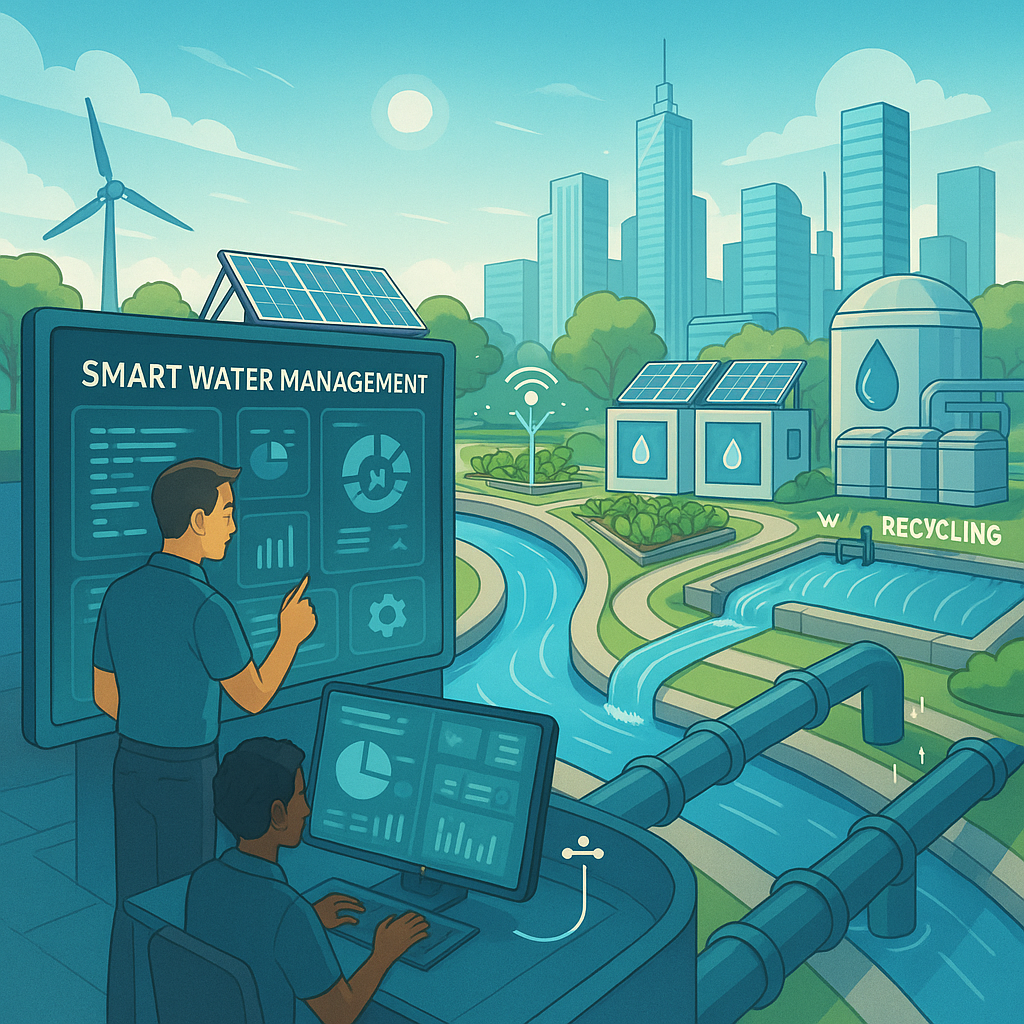In many places around the globe, water is getting scarce — and we can’t brush this issue aside. As urban areas expand, weather patterns change, and our resources dwindle ensuring sufficient clean water for all has become a major hurdle we face.
But there’s a silver lining: engineers and tech experts are creating clever solutions to improve our water management. Let’s explore how smart water management is helping the world address water scarcity — and why it’s more crucial now than ever before.
What Is Water Scarcity?
Water scarcity occurs when people, farms, and industries don’t have enough clean usable water to meet their needs. This problem isn’t limited to deserts or areas prone to drought. Even cities with modern systems can experience water shortages due to:
- Excessive use and waste
- Contamination
- Old and failing infrastructure
- Poor water distribution
In a nutshell, water demand is growing, but the supply can’t always keep up.
What Does “Smart” Water Management Mean?
“Smart water management” means using tech, data, and machines to make water systems work better and more . It’s about putting sensors, computer programs, and clever planning to work to cut down on waste, spot issues fast, and get the most out of every water drop.
Think of it as giving our water systems a digital boost — making them smarter, quicker to respond, and better for the long haul.
Key Engineering Fixes for Smarter Water Use
Here are some of the best ways engineers are dealing with water shortages:
1. Smart Sensors and Internet-Connected Gadgets
We can put sensors in pipes, tanks, and treatment plants to always keep an eye on:
- Leaks
- Water quality
- Pressure levels
This means issues are found and corrected quicker, which helps stop water waste and keeps the system working well.
2. AI and Predictive Analytics
Artificial intelligence helps water companies predict water use, spot strange usage patterns, and boost water distribution. For instance:
- AI can guess peak demand times.
- It can warn teams before a pipe bursts.
- It helps cities get ready for dry spells.
3. Precise Watering in Farming
Farms use a lot of water — but often more than they need to. Smart watering systems use soil sensors and weather info to water crops when needed. This saves water and keeps plants healthy.
4. Smart Water Meters
These meters allow homes and businesses to monitor their water consumption as it happens. They can notify users about leaks or jumps in usage — helping cut costs and reduce waste.
Real-World Examples Making a Difference
Several cities and countries have already begun to use these smart water solutions. For instance:
- Singapore reuses wastewater with advanced treatment systems and uses smart meters to cut down on water waste.
- Israel has changed desert areas into productive farms by using drip irrigation and recycled water.
- Barcelona oversees its entire city water supply through a network of sensors and software saving millions of gallons each year.
Why Smart Water Management Matters
The advantages of smart water systems are obvious:
- 💧 Less water goes to waste
- 📉 Costs drop for governments and users alike
- 🔒 Water quality and safety get better
- 🌍 We’re more ready for climate change and droughts
When we plan ahead and use data, we can make our water supply last longer — without giving up on how well it works or how good it is.
What’s Stopping Us?
Sure, we face some hurdles:
- It costs a lot up front to put in sensors and systems
- Some places lack the know-how to handle tech
- People worry about privacy with devices that connect to the internet
But as tech gets cheaper and easier to use, these roadblocks are starting to fade away.
